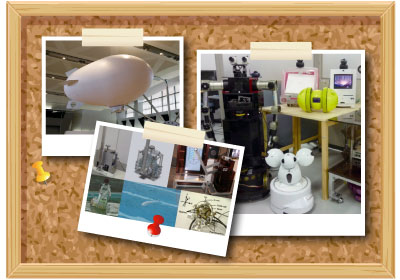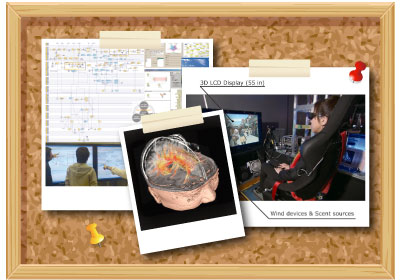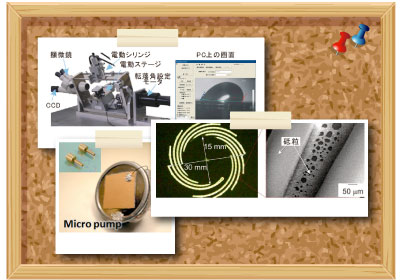Mechatronics is composed of three fields:
mechanical, electrical, and electronic engineering.
In the Division of Intelligent Mechanical Systems, you will acquire an in-depth knowledge of mechanical, electrical, and electronic engineering, which are the basis of modern mechatronics. In addition to learning about the latest technological topics in mechatronics, you will develop your logical and analytical skills, presentation abilities, and ethical judgment to appropriately handle innovative technological advances.
Control and Robotics Engineering

Important issues in various industries are to increase the affinity between machinery and people, improve the adaptability to society, and enhance security. In this field, you will learn about the development of mechatronics technology related to robots as well as fundamental theories necessary to control systems. Additionally, you will learn cutting-edge technologies related to vehicle control (e.g., ships, and automobiles), advanced system control (e.g. steel plants and chemical plants), robots that support people, robot partners that co-exist with people, and robot therapies.
Human and System Engineering

We aim to create novel systems that learn about and support people. Specifically, you will study human motion, biomechanics to determine the mechanisms that damage to human tissues, biometrics to understand the complex activity of a human brain from outside of the body, as well as virtual reality technology and interfaces to be able to simulate interactions between people and their environments on computers. In addition to realize a sustainable circulating society, you will study service-oriented systems that combine human beings, machineries, and society.
Material, Process, and Measurement Engineering

Because mechanical engineering, measurement engineering, electronic circuits, and micro- and nanotechnologies are the foundation for the design of electronic and mechanical functions, you will learn about these areas and related technologies. Specifically, you will contribute to the safety, security, and comfort of society by advancing cutting-edge technologies, including fabrication technologies of self-organizing micro- and nanostructures, high-precision sensing technologies to detect biomolecules and advance cell culturing environments for regenerative medicine, and functional surface- and membrane-related technologies to control light and electrons.





